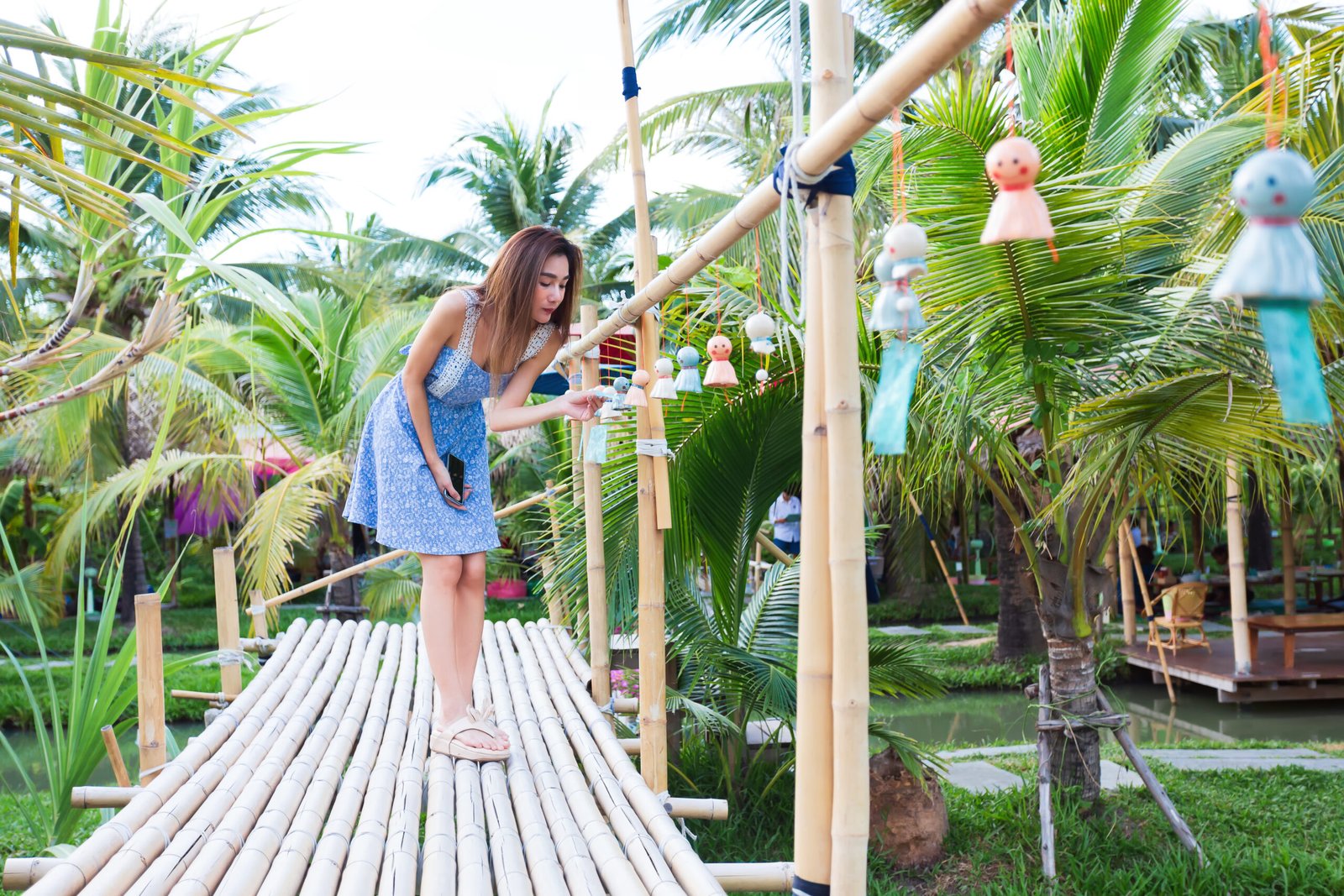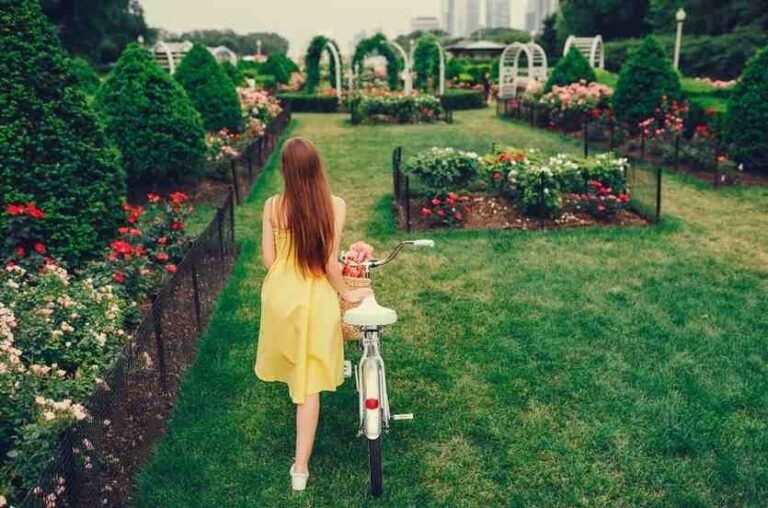Why Are Sensory Gardens Perfect for Mindfulness?
Sensory garden stimulate and engage the five primary senses: hearing, smell, sight, touch, and taste. These gardens foster a connection with nature and heighten awareness of surroundings and individual responses, incorporating mindfulness principles.
Spending time in such gardens can enhance well-being, reduce stress and anxiety, and calm the mind.
Below are some valuable tips for creating a sensory space in a backyard, terrace, or balcony.
What Are Sensory Gardens?
Sensory gardens are crafted to enhance the visitor’s experience, often by dividing the garden into themed sections or presenting a cohesive design.
These gardens allow visitors to feel, touch, hear, and immerse themselves in nature. Designing a sensory garden is fascinating and rewarding, as you can explore horticultural therapy techniques.
How to Create a Sensory Garden
Ideas for designing a sensory garden are numerous and could be used to meet any garden goal.
If you’re creating a garden as an educational tool for children and youngsters, keeping your space compact and the height of your plants within reach is important. If you’re creating the space as a sensory garden for people with disabilities, You will need the height of your plants and hardscape elements to suit the target audience.
The great thing about sensory gardens is that they can be designed to accommodate a broad range of people.
Begin with a plan. Be certain to have enough space for the dimensions of your selected plants. To create an additional impact, include hardscape elements like paths and benches, bird feeders, water fountains, and garden art in the space.
Best Plants for a Sensory Garden
When designing sensory gardens, the main aim is to create a space that feels good. So, it’s a good idea to select plants you are passionate about. However, creating a stunning and useful sensory garden needs an established foundation.
-
Sight
As a rule of the general rule, cool-toned blues, as well as purples, soothe the senses, and warm hues like oranges, reds, and yellows enthral.
Mixing different hues, such as sha, of tints, shades, and tones of every hue, can draw your eyes in. Your color could come from the foliage or flowers, and experimenting with different silhouettes of plants can be a potent visual instrument.
Examples:
- A tall, airy, pale, deep purple coneflower (Echinacea pallida) with the soft, mounded version from the prairie dropseed (Sporobolus heterolepis).
- Spiky plants such as the sea holly (Echinops species) or rattlesnake master (Eryngium spp. ) are combined with smoother and rounded plants.
-
Sound
Ornamental lawns are an ideal method of introducing soft sounds into a garden. When the wind blows through the grass, it creates an enchanting rustling sound, adding visual motion to the garden.
Other plants that produce gentle sounds are annuals with hard seed capsules that make small rattles.
For a larger garden, bamboo can provide a variety of noises depending on the strength of the wind, though you must choose the right cultivar or species of bamboo as it can be invasive and take over the garden.
- Northern Sea Oats Grass
- Switchgrass
- Balloon Flowers
- Pipsqueak
- Eucalyptus
- Cattails
- False Indigo
- Bamboo
- Poppies
-
Touch
You’ll want to use the best of various materials and textures to provide a sense of pleasure at your fingertips.
Include elements that contrast with each other. They could be soft, hard, rough, smooth, solid, or liquid.
The fluffy, furry leaves of the Lamb’s ears (Stachys byzantine), Feathers and plums, ornamental grasses, and the smooth, soft surface of succulents are all beautiful and soothing to the touch.
The rough seedpods, the tree bark, and the spongy mosses all provide a range of exciting textures. Why not use smooth pebbles to create a pathway or circle a lake? Natural stone boulders can add an element of texture.
Walls, sculptures, and other brick, stone, glass, or metal structures can add an appealing textural component to your landscape. Water features, when the water flows across your hands, are great for stimulating your hands, providing an energizing contrast.

Examples:
- Lamb’s ears (Stachys byzantine) have large fuzzy leaves.
- Miller Dusty (Jacobea maritima) has a soft, bouncy form.
Although slightly rough textures can be fun to add, avoid any items that could inflict injuries. Sensory gardens are supposed to be interactive, so stay away from anything that might have thorns or other things that aren’t pleasant to touch.
-
Smell and Taste
Edible Plants and herbs are the most obvious choice for scent and flavor. For instance, herbs such as Thyme or lavender make stunning garden plants that emit the most appealing aroma. They can also stimulate the taste buds. You can also eat some mountain or cucamelons, which are great in the garden.
Involve your senses of taste by incorporating food-friendly plants like edible flowers, herbs, vegetables, berries, or citrus trees. There are various ways to incorporate a sense of taste into your garden, no matter the size. You might have a designated vegetable patch or space on your balcony to grow herbs and vegetables. Many of the most commonly known edible flowers also come from herbs, such as lavender, sage, and chamomile.
- Chives
- Nasturtium
- Lavender
- Sage
- Apples
- Strawberries
- Tomatoes
- Peppers
- Melons
- Cucumbers
- Carrots
Benefits
Beyond the stunning effects they can have, sensory gardens offer various benefits to space that stimulate the senses.
👍 Accessibility
If you design a garden that engages all the senses, you can create a space enjoyed by all. Equally, people with disabilities can benefit from a range of sensory opportunities.
Visually impaired people, for example, can explore through touch, smell, and sound. People with hearing impairments can explore the space via the senses of smell, touch, and taste.
👍 Mindfulness
The sensory elements in a garden also allow people to engage in the fundamentals of mindfulness. The sense of touch sends a signal to the brain and nervous system, and we focus on feeling. We start feeling in the present.
We focus on a particular plant, which now becomes our world. This is mindfulness, a state of being present.
👍 Stress Relief
Interacting with the sensory garden can benefit those suffering from anxiety or stress. In helping to awaken all five senses, these gardens reduce stress and anxiety for any individual and allow them to focus more clearly on their environment, which is the sacred space within the garden.
Other Elements to Add
Alongside plants, you can incorporate some other things into your sensory garden to stimulate the senses.
Pathways
Pathways are an important element in sensory gardens. The pathways are usually intentional routes that allow individuals to explore and interact with all the garden elements, engaging their senses of sight, touch, sound, and smell.
Consider adding various textures, patterns, and shapes to enhance the sensory experience when designing a pathway.
According to Langelo, pathways may include wood chips, flagstones, sand, and stepping stones, or concrete if they are safe and enjoyable to walk on. Gravel is a typical material that produces an edgy sound. Brick can be a great method of adding more color.
Water Feature
Make soothing sounds in your garden with an outdoor fountain or bird bath. The sound of water can create a gentle, tranquil calm or a joyful or even raucous cacophony.
Sculptures
Use your garden’s sensory features to showcase your artwork by including sculptures in your garden. Sculptures or statues can serve as visually appealing art and add a tactile dimension to the garden.
Birdhouses
Birds bring visual appeal to your landscape and produce various pleasing sounds. Birdhouses and bird feeders can be used to draw birds. Birds’ sounds, sights and presence enhance the overall sensory appeal of the landscape.
Final Words
When you are creating your sensory garden, be sure to keep your eyes open and play with various types of plants. You might find yourself stuck in a phase of trial and error tweaking your garden for a few seasons before you can finish the design.
It is also possible to add or subtract elements in stages by beginning with a base and then layering on plants (or sensory methods) by any gaps you notice. Angell agrees, pointing out she believes that, by definition, a sensory garden must be experienced before any conclusions can be made.

FAQs
What is the purpose of a sensory garden?
Sensory gardens are designed to stimulate and engage the five essential senses to life: hearing, smell, sight, touch, and taste. This kind of garden will not only allow you to reconnect with nature but also help you become more aware of your surroundings and how you react to them, tapping into the principles of mindfulness.
What are good garden options for individuals with autism?
Sensory gardens, with their various colors, sounds, scents, and textures, offer a soothing and enjoyable experience for individuals with autism or sensory challenges.
What is an adaptive garden?
An adaptive garden focuses on removing physical, mental, or social barriers, making gardening accessible to everyone.
How can I design a sensory garden?
Sensory gardens can be arranged with designated zones for each sense or as a unified space blending various sensory elements.
What sounds are suitable for a sensory garden?
Hearing and Touch: Windchimes, birds that chirp
Include soothing sounds on your checklist of gardening suggestions, such as bamboo stems, wind chimes, water features, and rustling trees. The trees and shrubs will attract birds to your garden and enhance its tranquility.







